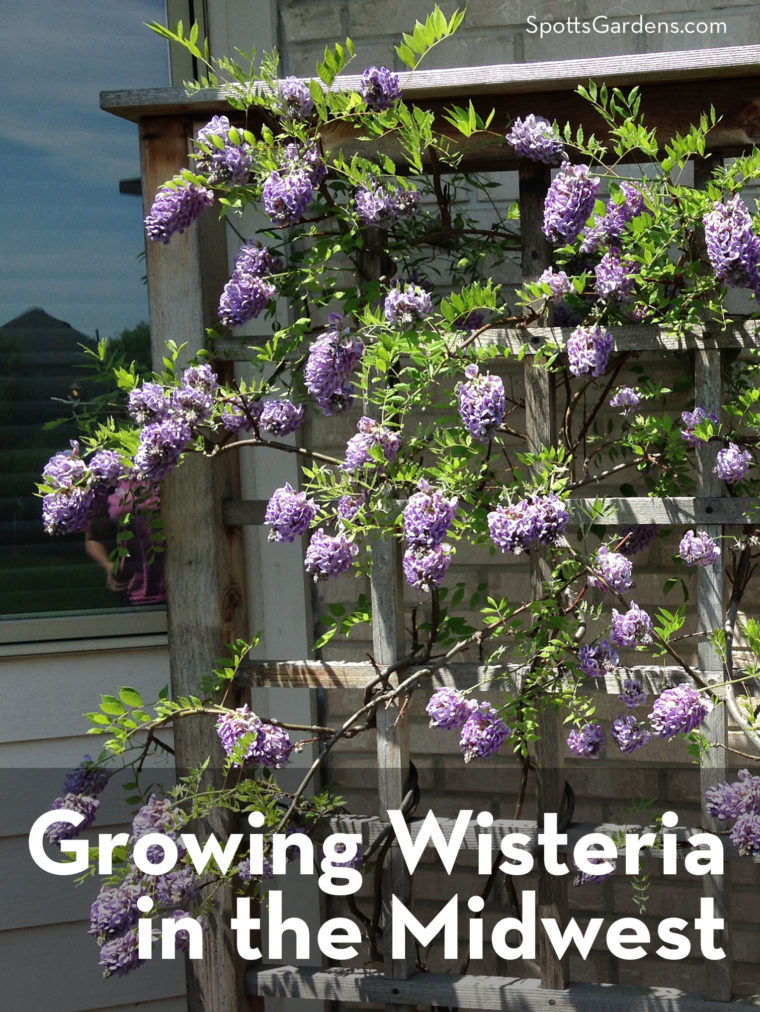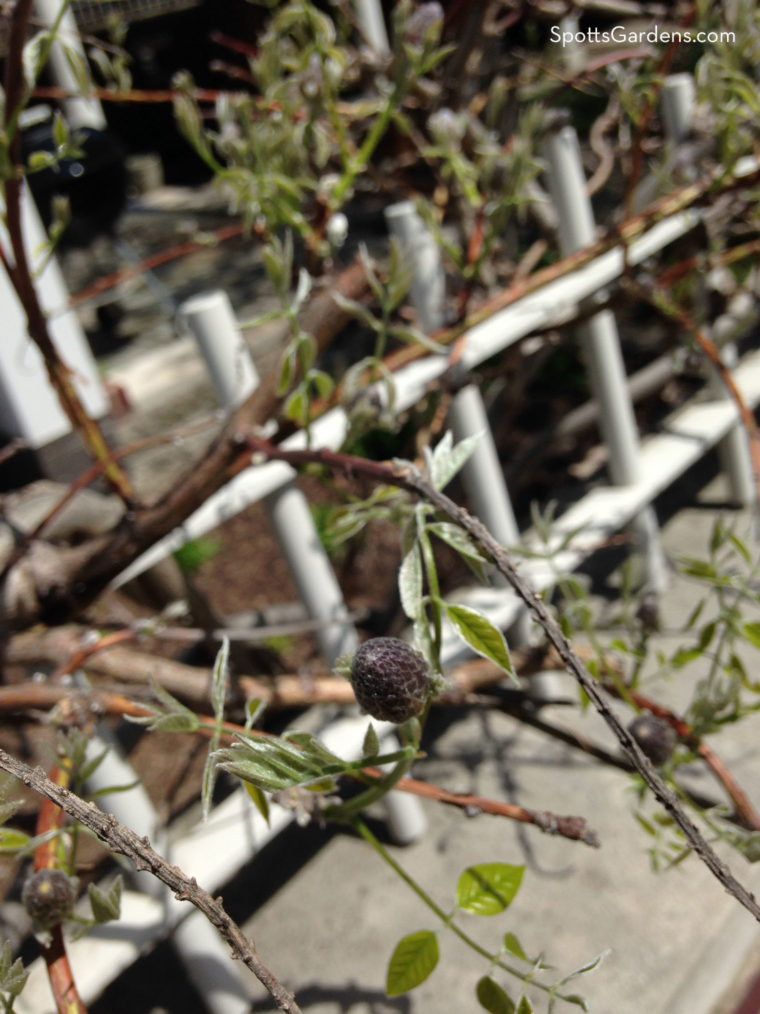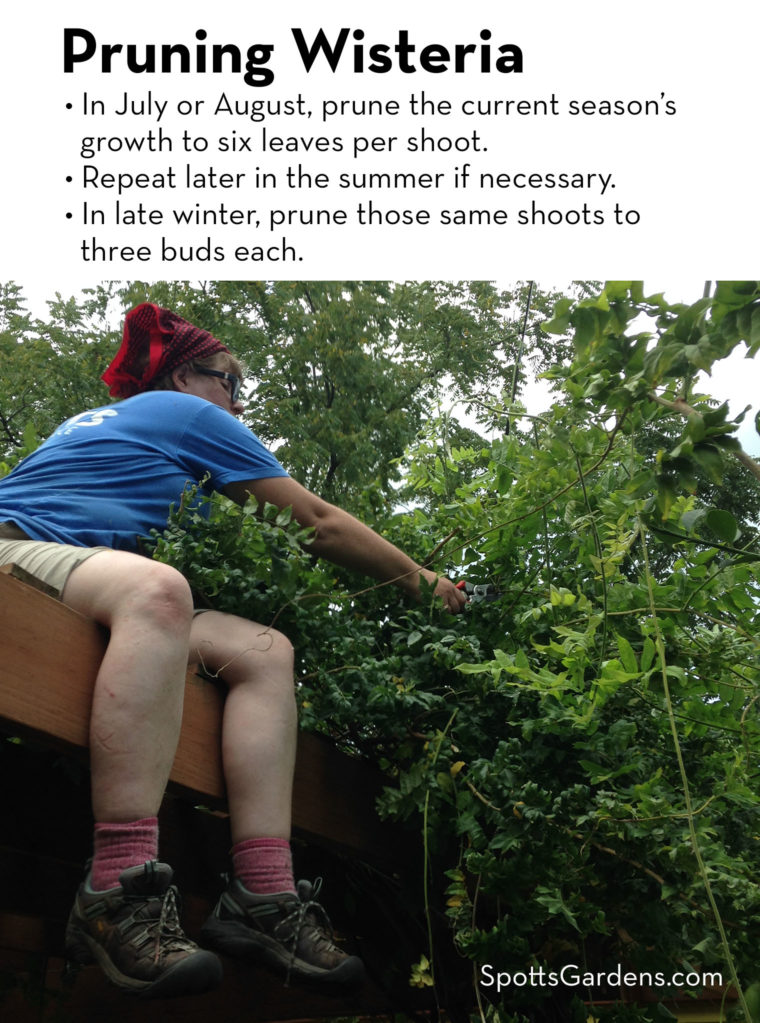Lush wisteria dripping with fat blossoms is a spring garden showstopper. But before you commit to this aggressive vine, read up on how to choose and train one. Then you can enjoy its luscious blooms without the headaches that accompany a pushy plant.

Choosing the Right One
The wisterias most commonly grown in America are the Asian species. Both the Japanese (Wisteria floribunda) and Chinese species (W. sinensis) bloom in great curtains of flowers in shades from white to mauve to purple. Unfortunately, they can also grow as much as ten feet per season and literally pull down any support that isn’t strong enough.
Before you choose an Asian wisteria (like the one at the top of this page), be sure:
- That it is not invasive in your area. Search for your state’s name + “invasive species.” In Indiana, stick to Japanese wisteria if you must have an Asian variety. The Indiana Invasive Species Council lists Chinese wisteria as an invasive species.
- That you have a structure strong enough to support it. At the minimum, this means durable materials like heavy, rot-resistant beams and 4′ x 4′ posts or thick metal pipes set in concrete. Wisteria climbs by twining, so it will wrap around its supports. If you plant it next to a tree, it will eventually strangle the tree.
- That you are comfortable with the idea of pruning it at least twice a year or hiring someone else to do it.
If all that seems a bit much for you, consider an American (Wisteria frutescens) or Kentucky wisteria (Wisteria macrostachya) instead. These American natives grow only about 1/3 as rampantly as the Asian species.
While you’ll still need a very sturdy trellis or structure, these species are far easier to keep in bounds. We’ve done particularly well with W. frutescens ‘Amethyst Falls’ (on the trellis in the title photo).
No matter which species you choose, plant it in a spot where the flowers will get at least six hours of sun a day. And don’t plant it right next to your house, where it’s likely to creep under the siding.
Pruning Wisteria
Both to encourage flowering and to keep its growth under control, prune wisteria at least twice a year.
Wisteria blooms on newer, green growth, not the growth that has turned woody. Like spring blooming shrubs, it sets next year’s blooms on the growth it makes in summer.
- In July or August, cut back the whippy, current season’s growth to five or six leaves on each shoot. Your goal is create a lot of short little branches that will bloom next year.
- If you have Japanese or Chinese wisteria, you may need to repeat this pruning a second or even third time later in summer and into early fall.
- In February or early March, cut those same little branches back to three buds each.
If you’d prefer to have someone else prune your wisteria, contact Spotts Garden Service for a free pruning estimate.
Why Won’t It Bloom?
Young wisteria can take a while to settle in before blooming, so be patient with your newly planted vine. However, if your vine is older, it’s possible that it’s been too pampered. Wisteria blooms best when it feels stressed, so try:
- Avoiding fertilizer of any kind. Wisteria is part of the legume family and actually fixes nitrogen in the soil. Giving it more nitrogen in the form of fertilizer just encourages green growth instead of blooms.
- Pruning it at least twice a year. If you haven’t pruned it for a while, start by cutting back some of its green growth in summer, as described above.
- Shocking it into blooming. Take a shovel and drive it into the ground a foot or two away from the main stem. Damaging the roots reduces the amount of nitrogen available to the plant and redirects its energy from producing green growth into flowering. A hard pruning will do the same thing, but you want to be careful about how much you remove.
Want to add a wisteria to your garden? We’ll be happy to help you choose the right one and get it established. Contact Spotts Garden Service for a free estimate.


